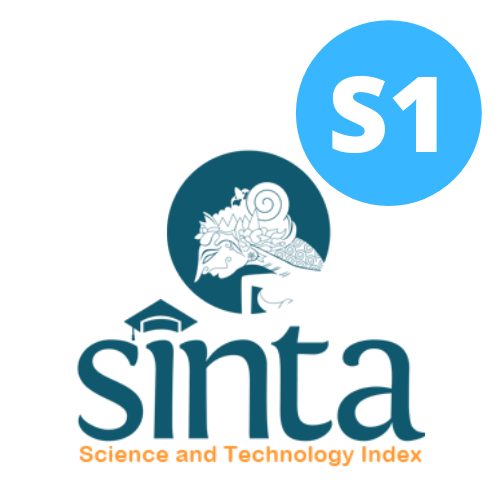The Maternal, Dietary Diversity, and Immunization Completeness Factors as the Determinants of Two-Year-Old Toddler Stunting in Kalinyamatan District Jepara Regency
Faktor Maternal, Keragaman Pangan dan Kelengkapan Imunisasi sebagai Determinan Stunting Baduta di Kecamatan Kalinyamatan Kabupaten Jepara

Downloads
Background: Stunting affects the quality of a country's human resources so it is important to prevent and overcome it. Stunting cases in Kalinyamatan Jepara District have increased from 12.4% in 2021 to 18.9% in 2022 and to 19.05% in 2023.
Objectives: This research analyzed the stunting risk factors of two-year-old toddlers in Kalinyamatan district, Jepara Regency.
Methods: This case-control study involved 77 stunting children and 77 normal children. The researchers selected the subjects at the integrated health care service with the highest number of visitors of two-year-old toddlers from 12 villages in Kalinyamatan district, Jepara regency, based on the inclusion and exclusion criteria. The research lasted from March to April 2024. The researchers collected the primary data with a questionnaire and the dietary diversity with a food recall questionnaire for 2x24 hours. Secondary data was collected from the mother-child health book (KIA).
Results: The results showed no differences in terms of ages and sex types from both stunting and normal children. The multivariate analysis with logistic regression test found a correlation between the anemia history during pregnancy (OR:2.75; 95% CI:1.31 – 5.78; p:0.007), career woman status (OR: 2.81; 95% CI: 1.24-6.37; p:0.014), low birth weight (OR: 3.98; 95% CI: 1.54-10.27; p:0.004), low dietary diversity (OR: 3.71; 95% CI: 1.63-8.44; p:0.002), and incomplete immunization (OR: 4.02; 95% CI: 1.66-9.74; p:0.002) with the stunting prevalence.
Conclusions: Maternal (the anemia history during the pregnancy, career woman status, and low birth weight), lack of dietary diversity, and incomplete immunization become the simultaneous determinants of stunting risk factors for two-year-old toddlers in Kalinyamatan district, Jepara Regency.
Dinkes, J. Laporan Kinerja Dinas Kesehatan Kabupaten Jepara Tahun 2021. Dinas Kesehat. Kabupaten Jepara 46–54 (2022).
RI, K. K. Buku Saku Kader Pintar Cegah Stunting. Kementerian Kesehatan RI vol. 01 (Kementerian Kesehatan RI, Jakarta, 2021).
Dasman, H. Empat dampak stunting bagi anak dan negara Indonesia. Conversat. 1, (2019).
Sumartini, E. Studi literatur: Dampak stunting terhadap kemampuan kognitif anak. in Jurnal Seminar Nasional vol. 2 127–134 (2020).
Unicef. Undernutrition contributes to nearly half of all deaths in children under 5 and is widespread in Asia and Africa. Recuper. https//data. unicef. org/topic/nutrition/malnutrition (2018).
Ruslah, R. Hubungan Paritas Dan Jarak Kelahiran Dengan Kejadian Stunting Di Pustu Pangeranan Wilayah Kerja Puskesmas Bangkalan. at (2023).
Mahmudiono, T., Sumarmi, S. & Rosenkranz, R. R. Household dietary diversity and child stunting in East Java, Indonesia. Asia Pac. J. Clin. Nutr. 26, 317–325 (2017).
Jepara, B. P. S. K. Kabupaten Jepara Dalam Angka 2020. (Jepara, 2021). doi:1102001.3320.
Amalia, R. & Rizki, L. K. Faktor Faktor Yang Mempengaruhi Keberhasilan Ibu Bekerja Dalam Pemberian ASI Eksklusif. Mandala Heal. 11, 44–51 (2018).
Kustanto, A. The Prevalence of Stunting, Poverty, and Economic Growth in Indonesia: A Dynamic Panel Data Causality Analysis. Prevalence 6, (2021).
Damayanti, H. O. Tingkat Ketahanan Pangan Pada Rumah Tangga Miskin di Daerah Rawan Banjir (Studi di Desa Tanjang dan Desa Kosekan Kecamatan Gabus Kabupaten Pati). J. Litbang Media Inf. Penelitian, Pengemb. dan IPTEK 14, 15–26 (2018).
Putri, A. T. A. Data Dan Informasi Kemiskinan Kabupaten Jepara. 3–22 (2023).
Putri, E. Y. P., Mulyanti, D. & Umayah, E. Kajian potensi penyebaran mikroorganisme patogen penyebab ISPA dan diare berdasarkan kondisi geografis dan demografis wilayah Indonesia. in Bandung Conference Series: Pharmacy vol. 2 884–890 (2022).
Sirajuddin, Astuti, T. & Desmarnita, U. Instrument of Inequality in Accessibility of Maternal and Child Health Services, for early detection of stunting: Cross-Sectional Study. Urban Health 3, 257–266 (2021).
Astriana, W. Kejadian anemia pada ibu hamil ditinjau dari paritas dan usia. J. Aisyah J. Ilmu Kesehat. 2, 123–130 (2017).
Endah Mulyani, S. S. T., Diani Octaviyanti Handajani, S. S. T. & Safriana, R. E. Buku Ajar Kesehatan Reproduksi Wanita. (Literasi Nusantara, 2020).
Sutriyawan, A., DIAN KURNIAWATI, R., Rahayu, S. R. I. & Habibi, J. Hubungan status imunisasi dan riwayat penyakit infeksi dengan kejadian stunting pada balita: studi retrospektif. (2020).
Wanda, Y. D., Elba, F., Didah, D., Susanti, A. I. & Rinawan, F. R. Riwayat status imunisasi dasar berhubungan dengan kejadian balita Stunting. JKM (Jurnal Kebidanan Malahayati) 7, 851–856 (2021).
Putri, M. G., Irawan, R. & Mukono, I. S. Hubungan Suplementasi Vitamin A, Pemberian Imunisasi, dan Riwayat Penyakit Infeksi Terhadap Kejadian Stunting Anak Usia 24-59 Bulan di Puskesmas Mulyorejo, Surabaya. Media Gizi Kesmas 10, 72–79 (2021).
Oktarina, Z. & Sudiarti, T. Faktor risiko stunting pada balita (24—59 bulan) di sumatera. J. gizi dan pangan 8, 177–180 (2013).
Angraini, D. I., Ginting, K. P. & Imantika, E. The Effect of History of Low Birth Weight in Newborns and Maternal Anemia in Pregnancy on the Risk of Stunting in Toddlers Age 0-24 Months in Tanjung Bintang Health Center South Lampung Regency. Sriwij. J. Med. 4, 85–91 (2021).
Mariana, D., Wulandari, D. & Padila, P. Hubungan Pola Makan dengan Kejadian Anemia pada Ibu Hamil di Wilayah Kerja Puskesmas. J. Keperawatan Silampari 1, 108–122 (2018).
Fitriyani, F., Nurwati, N. & Humaedi, S. Peran Ibu Yang Bekerja Dalam Pemenuhan Kebutuhan Dasar Anak. Pros. KS 3, (2016).
Agustiningrum, T. & Rokhanawati, D. Hubungan karakteristik ibu dengan kejadian stunting pada balita usia 24-59 bulan di wilayah kerja Puskesmas Wonosari I. at (2016).
Nisya, D. A., Meliyana, E. & Indrawati, L. Hubungan Karakteristik Ibu dengan Kejadian Stunting pada Anak Usia 6-36 Bulan. J. Penelit. Perawat Prof. 6, 2123–2132 (2024).
Ruaida, N. Gerakan 1000 hari Pertama Kehidupan Mencegah Terjadinya Stunting (Gizi Pendek) di Indonesia. Glob. Heal. Sci. 3, 139–151 (2018).
Ariani, M. Determinan Penyebab Kejadian Stunting Pada Balita: Tinjauan Literatur. Din. Kesehat. J. Kebidanan Dan Keperawatan 11, 172–186 (2020).
Lestari, W., Margawati, A. & Rahfiludin, Z. Faktor risiko stunting pada anak umur 6-24 bulan di kecamatan Penanggalan kota Subulussalam provinsi Aceh. J. Gizi Indones. (The Indones. J. Nutr. 3, 37–45 (2014).
Handriyanti, R. F. & Fitriani, A. Analisis keragaman pangan yang dikonsumsi balita terhadap risiko terjadinya stunting di indonesia. Muhammadiyah J. Nutr. Food Sci. 2, 32–42 (2021).
Al Uluf, U., Sinatrya, A. K. & Nadhiroh, S. R. Literature Review: The Relationship between Dietary Diversity with Stunting in Underfive Children. Amerta Nutr. 7, 147–153 (2023).
Prastia, T. N. & Listyandini, R. Keragaman pangan berhubungan dengan stunting pada anak usia 6-24 bulan. Hearty 8, (2020).
Fikawati, S., Syafiq, A., Ririyanti, R. K. & Gemily, S. C. Energy and protein intakes are associated with stunting among preschool children in Central Jakarta, Indonesia: a case-control study. Malays. J. Nutr. 27, (2021).
Maulida, N. R., Rachmalina, R. & Ermayani, E. Peningkatan Asupan Makan Beraneka Ragam Pada Anak Usia 6–23 Bulan Guna Mencapai Status Gizi Baik Dan Pencegahan Stunting Di Indonesia. PROSIDING 121 (2014).
Noorhasanah, E. & Tauhidah, N. I. Hubungan pola asuh ibu dengan kejadian stunting anak usia 12-59 bulan. J. Ilmu Keperawatan Anak 4, 37–42 (2021).
Loya, R. R. P. & Nuryanto, N. Pola asuh pemberian makan pada bayi stunting usia 6-12 bulan di Kabupaten Sumba Tengah, Nusa Tenggara Timur. J. Nutr. Coll. 6, 84–95 (2017).
Mulu, N., Mohammed, B., Woldie, H. & Shitu, K. Determinants of stunting and wasting in street children in Northwest Ethiopia: A community-based study. Nutrition 94, 111532 (2022).
Berhe, K., Seid, O., Gebremariam, Y., Berhe, A. & Etsay, N. Risk factors of stunting (chronic undernutrition) of children aged 6 to 24 months in Mekelle City, Tigray Region, North Ethiopia: An unmatched case-control study. PLoS One 14, e0217736 (2019).
Hamidah, S. & Rizal, M. S. Faktor Resiko Terjadinya Stunting Pada Balita Umur 12-24 Bulan. Indones. J. Midwifery Today 2, (2022).
Rahmawati, E., Wulandari, R. F., Yektiningsih, E. & Atmojo, D. S. Efektivitas Metode Health Education Terhadap Perilaku Ibu Tentang Pencegahan Stunting di Posyandu Dahlia Desa Pelem Kecamatan Pare Kabupaten Kediri. Indones. J. Heal. Sci. 15, 77–85 (2023).
Amini, A. Hubungan kunjungan Antenatal Care (ANC) dengan kejadian stunting pada balita usia 12-59 bulan di Kabupaten Lombok Utara Provinsi NTB tahun 2016. at (2017).
Wangiyana, N. K. A. S. et al. Praktik Pemberian Mp-Asi Terhadap Risiko Stunting Pada Anak Usia 6-12 Bulan Di Lombok Tengah [the Complementary Feeding Practice and Risk of Stunting Among Children Aged 6-12 Months in Central Lombok]. (2020).
Setiyawati, M. E., Ardhiyanti, L. P., Hamid, E. N., Muliarta, N. A. T. & Raihanah, Y. J. Studi Literatur: Keadaan Dan Penanganan Stunting Di Indonesia. IKRA-ITH Hum. J. Sos. dan Hum. 8, 179–186 (2024).
Prasiwi, N. W., Ristanti, I. K., FD, T. Y. & Salamah, K. Hubungan Antara Status Gizi dengan Kejadian ISPA pada Balita. Cerdika J. Ilm. Indones. 1, 560–566 (2021).
Halim, L. A. Hubungan faktor-faktor risiko dengan stunting pada anak usia 3-5 tahun di TK/PAUD kecamatan tuminting. J. Med. Dan Rehabil. 1, (2018).
Budiastutik, I. & Nugrahaeni, S. A. Determinants of stunting in Indonesia: A literature review. l J. Heal. Res. 2, 43–49 (2018).
Copyright (c) 2024 Amerta Nutrition

This work is licensed under a Creative Commons Attribution-ShareAlike 4.0 International License.
AMERTA NUTR by Unair is licensed under a Creative Commons Attribution-ShareAlike 4.0 International License.
1. The journal allows the author to hold the copyright of the article without restrictions.
2. The journal allows the author(s) to retain publishing rights without restrictions
3. The legal formal aspect of journal publication accessibility refers to Creative Commons Attribution Share-Alike (CC BY-SA).
4. The Creative Commons Attribution Share-Alike (CC BY-SA) license allows re-distribution and re-use of a licensed work on the conditions that the creator is appropriately credited and that any derivative work is made available under "the same, similar or a compatible license”. Other than the conditions mentioned above, the editorial board is not responsible for copyright violation.












































